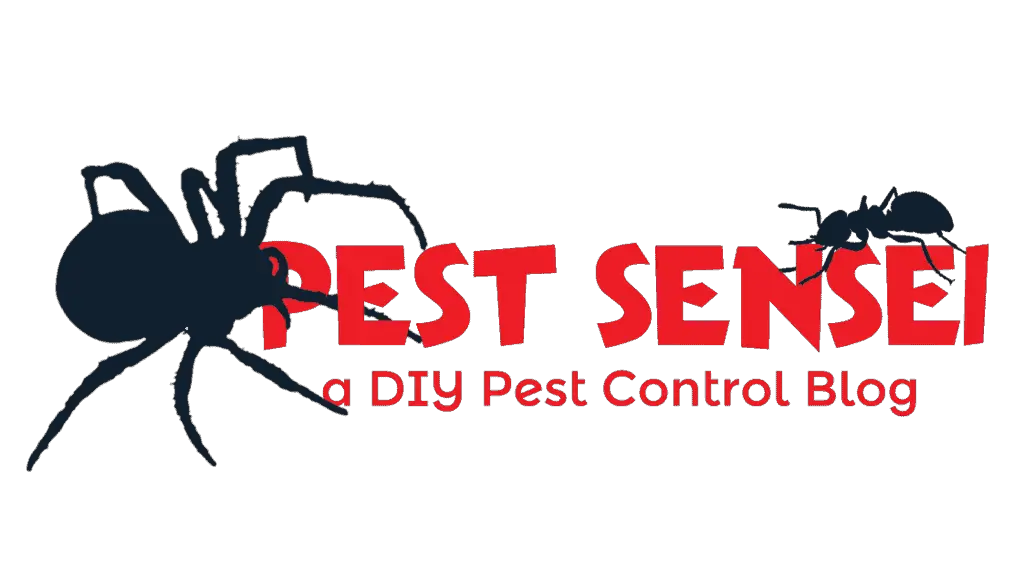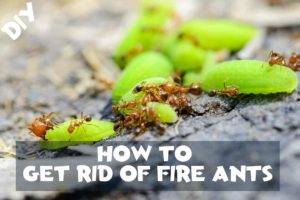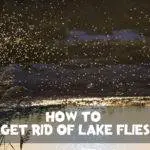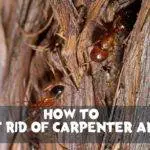If you stay in the southern US, you will understand the fear of seeing an imported fire ant mound in your yard. Fortunately, they are not that difficult to deal with. I’ll teach you how to get rid of imported fire ants using safe and effective methods in this guide.
To get rid of imported fire ants, sprinkle baits around the mound when the fire ants are actively foraging. Do this when the ground is dry and it is not going to rain. It takes a week to months to eliminate the colony depending on the product used. To prevent infestation, broadcast baits in late spring or fall to kill young colonies.
Continue reading to understand more about fire ants and details on the treatment options.
Introduction to Imported Fire Ants
There are 2 species of ants known as the imported fire ants: Solenopsis invicta, the red imported fire ants (RIFA) and Solenopsis richteri, the black imported fire ants (BIFA).
Both species are native to South America. They have been “imported” by many countries, and have established themselves in those countries where the climate is warm. The BIFA was first reported in the US around 1918, while the RIFA landed in the US in the late 1930s through soil materials.
The imported fire ants are notorious for their aggressive behaviors. They are known to attack in mass, biting and stinging repeatedly, resulting in burning sensation on the wound. Some victims who are sensitive to the venom die from anaphylaxis. They also damage crops, kill ground-nesting birds, insects, turtles, etc., reduce the food sources for wildlife, hurt your pets, and damage electrical equipment.
Imported fire ants usually nest outdoors, forming a mound. Occasionally they move indoors if the weather is too hot, or if their nest is flooded by rain. Inside the building, the imported fire ants love to aggregate around electrical equipment, such as switch boxes, computers, air conditioners and lighting. They can chew through the insulation on electric wires and cause short circuits.
Imported fire ants may form super colonies where several colonies work as one.
How to Identify Imported Fire Ants
There are a few ways to identify imported fire ants: from their appearance, mounds and behaviors.
If you see aggressive dark red to black ants with varying size between ⅛-¼”, and mounds that have no apparent entrance, you have imported fire ant infestation.
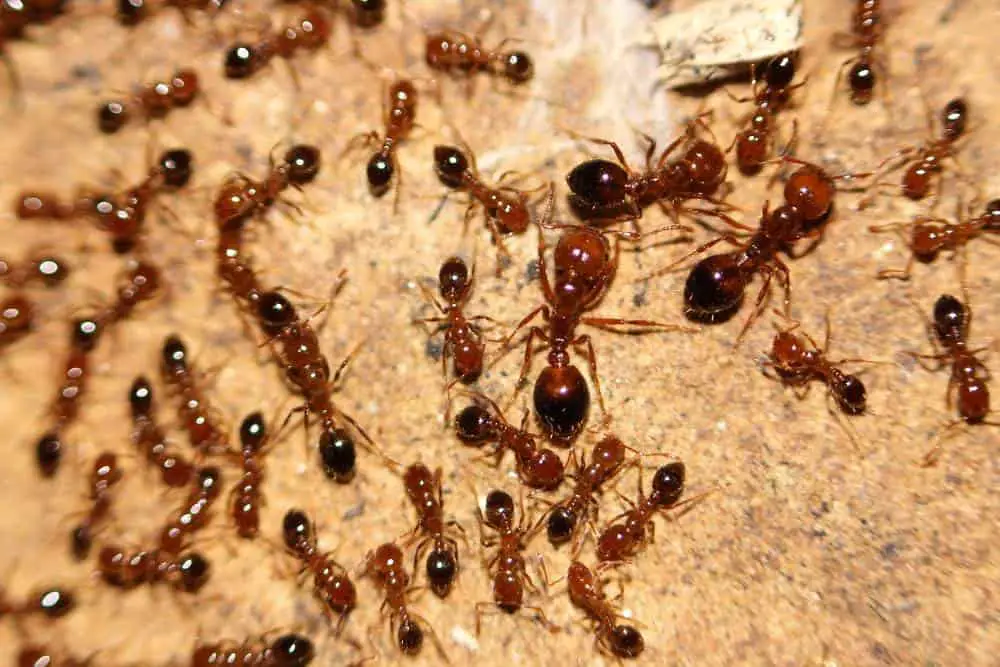
Imported fire ants are either dark red or black in color. The workers display what we call polymorphism, where their body length varies between ⅛” to ¼” within the same colony. Majority of the worker ants of other species from the same colony have uniform size, or 2 discrete sizes.
Imported fire ants typically build their mounds in the open. They are usually under sunny areas, such as lawns and parks, but can also be found in partially shaded areas. The mound appears fluffy and loose. They may be flat or dome-shaped. Under the right conditions, the mound can grow up to 24” in height.
Unlike other ants’ mounds, imported fire ant mounds do not have an apparent entrance on the top of the mound. They leave the mound through concealed exits at the side or underground.
You can try to poke a hole deep into the mound using a long stick. Hundreds of imported fire ants will gush out and aggressively climb along the stick to attack the stick. If the nest is small, 5-50 ants will come out.
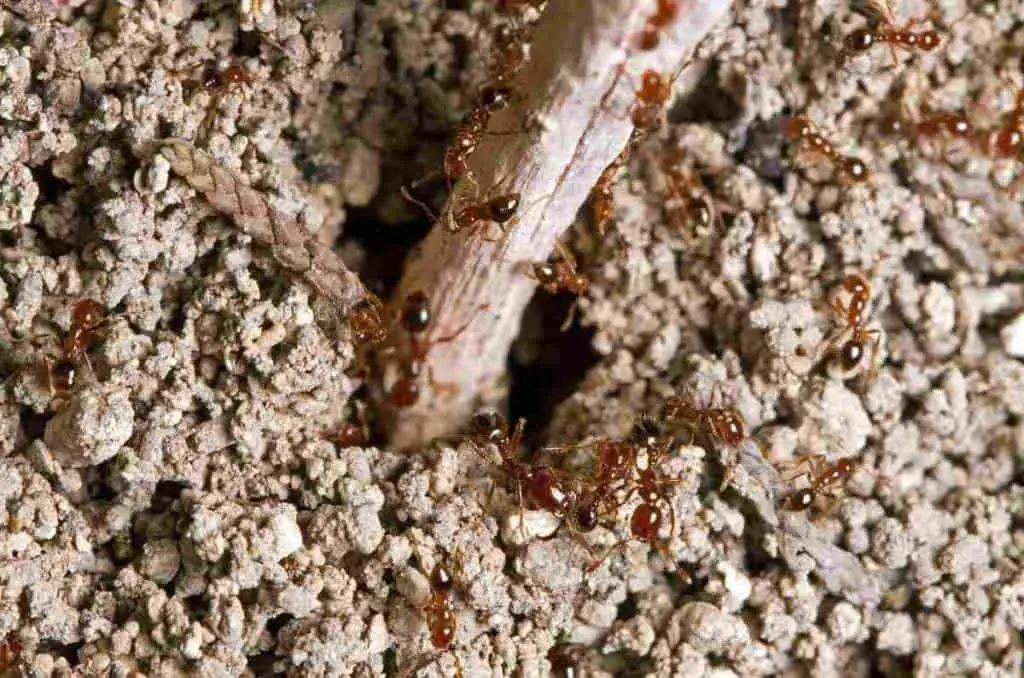
Of course, if you are bitten by the nasty imported fire ants, you would know their identity from the painful, burning sensation.
How to Treat Imported Fire Ant Mounds
Baiting
Highlight:
- Can achieve colony elimination.
- Application is easy because ants actively spread the toxin throughout the colony through trophallaxis.
- Lower environmental impact than drenching.
Lowlight:
- Slow acting, hence requires patience to achieve total control.
- More expensive than direct drenching.
- Efficacy can be affected by ant activity, rain and water.
Baiting is the most efficient way to treat imported fire ant mounds. Baits contain food to attract the ants, and insecticides to kill them. Baits for imported fire ants usually come in granules.
Worker ants cannot consume solid food. They bring the solid, granular baits back to their colony and feed their larvae. The larvae digest the solid bait, absorb some of it, and regurgitate the rest in fluid form. The workers then share the insecticide-contaminated fluid around the whole colony, through what we call trophallaxis.
The baits are slow acting so that it can be passed to all the ants within the colony. Ultimately, the colony collapses because all individuals in the colony are poisoned and killed.
Before you bait, look at the weather. Don’t bait if it looks like it’s going to rain, or just after a rain when the ground is still wet. Most fire ant baits work best when they are dry.
Bait should be applied when imported fire ants are actively foraging. That is when the temperature is around 77-95 °F. You can try to put a piece of potato chip, some peanut butter or a slice of hotdog next to the mound (not on the mound), and observe whether the ants are active. If they come out within 10-20 minutes to collect the food, it is a good time to do baiting.
Once you have found the best time to bait, sprinkle the granular baits around the mound, not on the mound. Observe whether the ants pick up the bait. If they do, great! Your job is done. Do not water the treated area and the surrounding.
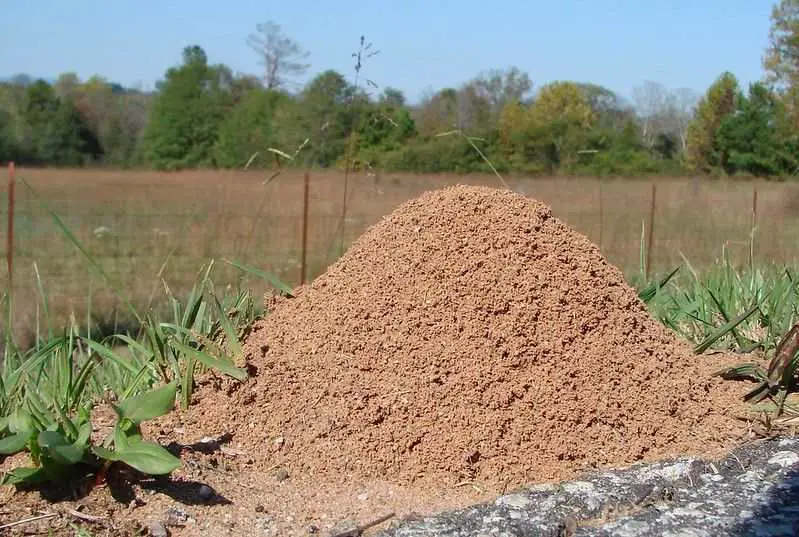
Sometimes, the imported fire ants from the treated mound will bud to form a new colony. A week after treatment, check within 10-20 ft from the treated mound to look for any small, new mound. If you find a new mound, treat it using the same method.
It may take up to several weeks before the treated colony collapses. Barricade the surrounding area where you laid the baits to prevent your pets from accidentally ingesting the bait.
I recommend you use either Extinguish Plus Fire Ant Bait for complete eradication, or Advion Fire Ant Bait if you want to achieve a fast control. Both products are EPA-registered and have been evaluated in terms of efficacy and safety. Make sure you read the label and follow the instructions on the label.
Extinguish Plus Fire Ant Bait contains hydramethylnon and methoprene. The former is a fast-acting metabolic pesticide that kills the workers, while the latter prevents the larvae from turning into workers. At the same time, it weakens the reproduction capability of the affected queens. Without new broods to replace the dead workers, the colony collapsed within 4-8 weeks. Products containing methoprene alone take months to achieve colony elimination.
Advion Fire Ant Bait contains fast acting indoxacarb. Colony control can be achieved within 1-2 weeks depending on the bait take up rate.
If you are familiar with baiting, you might wonder how fast-acting bait eliminates ant colonies, because it takes time for the bait to be distributed across the colony. This is because while indoxacarb is fast acting, it starts killing after 12 hours. Coupled with fire ants’ productivity, the bait would have been distributed throughout the colony by then, ensuring a successful control.
Advion Fire Ant Bait is more expensive, but it is worth the price for its efficacy and speed of control.
Drenching
Highlight:
- Immediate killing effect.
- Low cost.
- Efficacy not affected by any activity and weather conditions.
Lowlight:
- Unlikely to achieve colony elimination.
- Can promote budding of ant colonies.
- Need some drilling work so that the pesticide can penetrate deep enough.
- Higher environmental impact due to the use of liquid pesticide.
Drenching is where you treat the fire ant nests with liquid pesticide such as Bifen I/T.
Prepare the pesticide according to the instructions on the label. Pour the insecticide onto the mound and 10″ around the mound. To improve the treatment efficacy, conduct drenching when the soil is dry so that more liquid pesticide can be absorbed into the soil.
Bear in mind that imported fire ants nest deep underground. You need to apply a lot of liquid pesticide to ensure it reaches deep enough to kill as many ants as possible.
Another issue with drenching is you need to find the mound (baiting can still work without locating the mound, although it is not as effective as treating an individual mound). Not all mounds are dome-shaped. Some mounds are flat and inconspicuous. Moreover, surviving ants can bud and form new colonies.
How to Treat Imported Fire Ants Indoors
Although rare, imported fire ants may move indoors when the weather is too hot or the nest is flooded. They can nest in void, electric socket, switch box, and electrical compartment of appliances.
To treat imported fire ants indoors, use baits. Sprinkle the baits around the nests or along ant trails. Both Extinguish Plus Fire Ant Bait or Advion Fire Ants Bait are registered for indoor use.
You can try to locate the nest by patiently following the foraging ants. Put some food (potato chips, hotdog, peanut butter, etc.) on the ant trail and see where the fire ants bring them. If you can find the nest, you can physically remove it, put bait around it, or spray with liquid pesticide (if there is no electrical hazard).
One way to remove ant nest physically is by using a strong vacuum. Be careful when doing so because the fire ants will definitely attack you. Once contained in the vacuum cleaner’s bin, you can kill those fire ants using boiling water. No pesticide is required.
Home Remedies
The best known home remedies are none other but boric acid. While boric acid is effective in killing many pests when ingested, it is not easy to produce palatable bait with enough toxicity that acts slow enough for the bait to be distributed throughout the colony.
Please do not use any home remedies to treat the imported fire ant mound. You can end up causing more harm than good using non-robust home remedies.
If the infestation is found indoors, don’t attempt to use any “natural” ant repellents such as citronella oil or whatsoever to repel the ants. At best, you are repelling them from 1 corner of your house to another corner, which you potentially can’t find and thought the issue is resolved.
How to Prevent Imported Fire Ants
Prevention of imported fire ants is difficult and involves the use of pesticides. In states where imported fire ants are prevalent, prevention measures can be done in late spring and fall.
To prevent infestation of imported fire ants, broadcast the baits. This should kill any colonies before they grow too big. However, it also kills any native ant colonies.
If there are any colonies that survive, treat the mound individually following methods mentioned in the earlier section.
What if I Am Bitten and Stung by Imported Fire Ants?
Bites and stings of imported fire ants are painful. The wounds will develop pustules, which can take a few weeks to recover. You can treat the pustules with over the counter pain relief products.
If you experience severe symptoms, such as breathing difficulties, nausea, irregular heartbeat, serious swelling, etc., please seek medical attention immediately.
If you are hypersensitive to insect bites and live in places with imported fire ants, consult your doctor and get an EpiPen® or Epinephrine Auto-Injector with you for emergency use.
Final Words
Imported fire ants can be easily dealt with as long as you use the right product and right method. However, if you can’t handle the infestation, make sure you get help from a pest control service provider. You can get a non-obligatory quote from your local service providers on Networx.
Finally, I hope you find this guide helpful, and thank you for reading. Do share my blog if you find it helpful.
